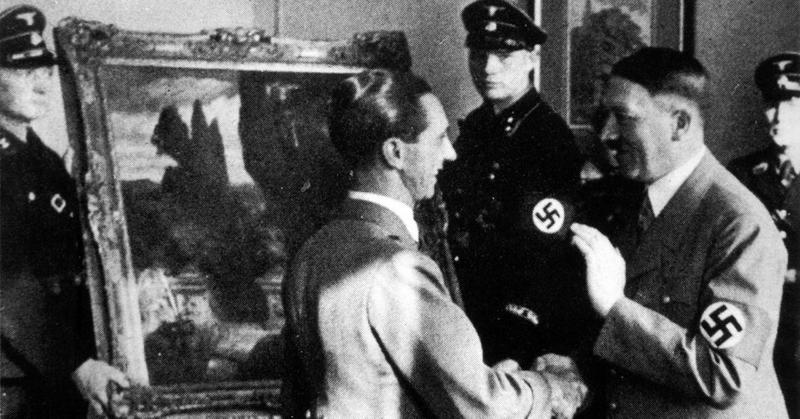Monuments Men: The Story Of How FDR Stole 20% Of Europe's Art Back From The Nazis
By | March 2, 2021

Do you remember the 2014 film The Monuments Men, starring George Clooney and Matt Damon? It was loosely based on a book that told the real-life story of a group of people tasked with hunting down and reclaiming priceless works of art and important cultural artifacts from the Nazis during World War II. Thanks to the book and movie, people today are more aware than ever of the story of the Monuments Men and how the U.S. was instrumental in recovering a significant chunk of Europe's art.
Hitler And Art
Adolf Hitler was a frustrated artist himself, so he understood the monetary and cultural value of art. Naturally, after World War II broke out, he sent his forces to loot the great estates, churches, museums, libraries, galleries, and universities of Europe, where they seized paintings, sculptures, religious artifacts, books, musical instruments, and other cultural artifacts with the goal of destroying Jewish art and preserving that which supported his idea of the superiority of the Aryan race. They took priceless works by many of the great masters—including Picasso, Da Vinci, Rembrandt, and Michelangelo—and Hitler himself sifted through the documentation, hand-picking the pieces he wanted to display in an art museum he planned to build in Austria. When the Allied nations got word of the plan from museum officials and art historians, they formed the Monuments, Fine Arts, and Archives program, a group of about 350 (mostly) volunteers representing 13 countries who were charged with the recovery of the stolen art. They eventually became known simply as the Monuments Men.

The Monuments Men
Initially, the plan was for the Monuments Men to accompany soldiers as they liberated cities across Europe, but they soon found that the Monuments Men were hardly Rambo types. Most were middle-aged intellectuals, led by Dr. Fred Shipman, who was the director of the Franklin D. Roosevelt Library. (Roosevelt himself granted Shipman's leave of absence to join the recovery effort in Europe.) After two members of the Monuments Men were killed in the conflict, the role of the Monuments Men was revamped.
After the war ended in May 1945 and an estimated 20% of Europe's art remained missing, they scoured Nazi documents for clues to the location of the hidden treasure. They interviewed Germans, including former Nazi soldiers, and searched abandoned warehouses and country estates for crates of stolen artifacts. In one serendipitous encounter, a member of the Monuments Men came down with a toothache and visited a local dentist, whose son divulged that he'd helped stash paintings and artwork in the nearby Altaussee Salt Mine.

Striking Gold
In the Altaussee Salt Mine, the Monuments Men discovered a labyrinth of tunnels housing more than 6,000 paintings packed away in crates and boxes, including the Ghent Altarpiece and Madonna Of Bruges by Michelangelo. Another cache of stolen artwork was uncovered at the picturesque Neuschwanstein Castle in Germany, which inspired the fairy tale castle at Disneyland. It took the Monuments Men roughly six weeks to catalog and document all of the items found at Neuschwanstein Castle.
By 1951, the Monuments Men had recovered, restored, and returned about five million artifacts and works of art that had been plundered by the Nazis, but their job isn't over. To this day, thousands of works—including those by Van Gogh, Rodin, Monet, and Botticelli—remain missing.

